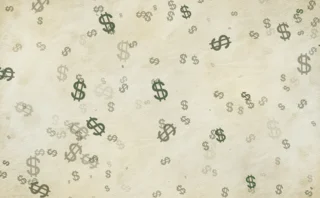
Richard Hunter explains ... Ratings
We take you back to the credit basics to review everything you thought you already knew but were too afraid to ask ... In this, the first of the series, Richard Hunter, managing director of Fitch Ratings in London, reviews the very bedrock of credit investing: the provision of credit ratings
Credit ratings are an opinion on the ability of an entity or of a securities issue to meet its financial obligations or commitments on a timely basis. Credit ratings are not recommendations to buy, sell or hold a security. They are not audits, assessments of the possibility of fraud, or second guesses of events yet to take place. Neither are they commentaries on the pricing of bonds relative to ratings or an expression of a percentage probability of default.
The three dominant rating agencies, Fitch Ratings, Moody's Investors Service and Standard & Poor's, assign ratings to corporates, sovereigns (countries), local authorities, financial institutions, debt issues made by or loans to each of the above, tranches of structured transactions, or a legally 'ring-fenced' entity set up for the sole purpose of issuing debt to finance a portfolio of assets - for example, mortgage loans or trade receivables.
For Fitch and Standard & Poor's, the ratings most commonly quoted - long-term senior, unsecured issuer counterparty ratings - run from AAA to D, with AAA being the highest rating. The suffix '+' or '-' is added to denote relative status within major rating categories. Moody's scale runs from Aaa to C for long-term ratings. Moody's uses numbers rather than +/- modifiers to denote relative status within major rating categories.
Markets have traditionally viewed ratings at or above BBB-/Baa3 as 'investment grade'; ratings below this level are considered 'speculative grade', colloquially known as 'high yield' or 'junk'. Investment guidelines and indices often limit investment in instruments rated in the speculative grade. Ratings also carry an outlook and can carry a 'rating watch' to reduce 'bolt from the blue' rating actions and highlight concerns. An outlook may be positive, stable or negative and indicates the most likely direction of a rating over a one- to two-year period. A positive rating watch indicates a potential upgrade, negative indicates a potential downgrade, while an evolving rating watch may be raised, lowered or maintained.
Ratings are arrived at after an analyst reviews information which is either publicly available or provided on a confidential basis. After a rating review meeting, a draft report is prepared and a rating committee held, then a report and rating action commentary in the form of a press release is published. There is ongoing surveillance of all credit ratings and reviews can be event-driven or period-driven - ratings are formally reviewed at least once annually.
What consumers typically want from the rating process varies. The issuer wants an experienced lead analyst, transparent criteria for their sector, an intelligent rating committee, a dialogue on rating findings and a high rating. At the same time, it also wants to avoid rating volatility, and downgrades in particular.
The bookrunner wants all these things but wants absolutely the highest possible rating to be assigned initially while being arguably less concerned about volatility and future downgrades.
The investor wants the experienced lead analyst, transparent criteria and intelligent rating committee, but some may want low ratings, which would force a higher coupon from the issuer. Conversely, some may want a higher rating than might be appropriate, which would let them hold a higher-yielding instrument.
GLOSSARY
Investment grade: Ratings at or above BBB- as rated by Standard & Poor's or Fitch, or Baa3 by Moody's
Speculative grade: Also called junk or high yield; ratings below BBB-/Baa3, for which investment guidelines and indices might limit investment
Outlook: An indication of the likely direction of a rating over a one- to two-year period
Rating watch: An indication of a heightened probability that a rating change will take place, a positive rating watch indicating a potential upgrade and a negative rating watch indicating a potential downgrade.
Only users who have a paid subscription or are part of a corporate subscription are able to print or copy content.
To access these options, along with all other subscription benefits, please contact info@risk.net or view our subscription options here: http://subscriptions.risk.net/subscribe
You are currently unable to print this content. Please contact info@risk.net to find out more.
You are currently unable to copy this content. Please contact info@risk.net to find out more.
Copyright Infopro Digital Limited. All rights reserved.
You may share this content using our article tools. Printing this content is for the sole use of the Authorised User (named subscriber), as outlined in our terms and conditions - https://www.infopro-insight.com/terms-conditions/insight-subscriptions/
If you would like to purchase additional rights please email info@risk.net
Copyright Infopro Digital Limited. All rights reserved.
You may share this content using our article tools. Copying this content is for the sole use of the Authorised User (named subscriber), as outlined in our terms and conditions - https://www.infopro-insight.com/terms-conditions/insight-subscriptions/
If you would like to purchase additional rights please email info@risk.net
More on Credit risk
Finding the investment management ‘one analytics view’
This paper outlines the benefits accruing to buy-side practitioners on the back of generating a single analytics view of their risk and performance metrics across funds, regions and asset classes
Revolutionising liquidity management: harnessing operational intelligence for real‑time insights and risk mitigation
Pierre Gaudin, head of business development at ActiveViam, explains the importance of fast, in-memory data analysis functions in allowing firms to consistently provide senior decision-makers with actionable insights
Sec-lending haircuts and indemnification pricing
A pricing method for borrowed securities that includes haircut and indemnification is introduced
XVAs and counterparty credit risk for energy markets: addressing the challenges and unravelling complexity
In this webinar, a panel of quantitative researchers and risk practitioners from banks, energy firms and a software vendor discuss practical challenges in the modelling and risk management of XVAs and CCR in the energy markets, and how to overcome them.
Credit risk & modelling – Special report 2021
This Risk special report provides an insight on the challenges facing banks in measuring and mitigating credit risk in the current environment, and the strategies they are deploying to adapt to a more stringent regulatory approach.
The wild world of credit models
The Covid-19 pandemic has induced a kind of schizophrenia in loan-loss models. When the pandemic hit, banks overprovisioned for credit losses on the assumption that the economy would head south. But when government stimulus packages put wads of cash in…
Driving greater value in credit risk and modelling
A forum of industry leaders discusses the challenges facing banks in measuring and mitigating credit risk in the current environment, and strategies to adapt to a more stringent regulatory framework in the future
Accelerating the evolution of credit decisioning and modelling
Anthony Mancuso, director, global head of risk modelling and decisioning at SAS, explains the importance of developing a fully capable credit modelling lifecycle to empower non-specialist personnel, and offers insight into its own solutions to this end,…
Most read
- Top 10 operational risks for 2024
- Japanese megabanks shun internal models as FRTB bites
- Market for ‘orphan’ hedges leaves some borrowers stranded







